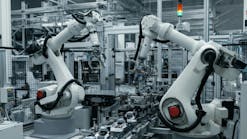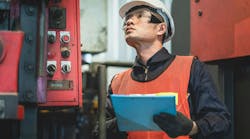What’s the Difference Between Motion-Control and Robotics Systems? (.PDF Download)
Automating the factory floor is a growing trend across the industrial space. It’s not hard to understand why, since such applications help improve efficiency and production rates. To create the automated factory, an engineer can implement a motion-control system or introduce a robotic system. Either can be used to accomplish the same task. However, each has a unique setup, programming options, motion flexibility, and economic benefit.
The Basics of Motion Systems and Robots
A motion-control system is a straightforward concept: Initiate and control the movement of a load to perform work. They are capable of precise speed, position, and torque control. An application requiring the positioning of a product, synchronization of separate elements, or the rapid start and stop of motion are case examples for the use of motion control.
Such systems are typically comprised of three basic components: the controller, the drive (or the amplifier), and the motor. The controller plans the path or trajectory calculations, sending low-voltage command signals to the drive and applying necessary voltage and current to the motor, resulting in the desired motion.
Programmable logic controllers (PLCs) provide an inexpensive and noise-free method of motion control. Ladder-logic programming has been a staple for PLCs, with newer models featuring human-machine-interface (HMI) panels that are visual representations of the programming code. PLCs can be used to control multiple motion-control setups and logic control on machinery.
In a typical PLC-based motion-control system, the high-speed pulse output cards are used in PLCs to generate a pulse train for each servo or stepper drive. The drive receives the pulses, and for each pulse indexes the motor shaft a pre-set amount. A separate signal is used to determine the direction of travel. This method is known as “step and direction.”








